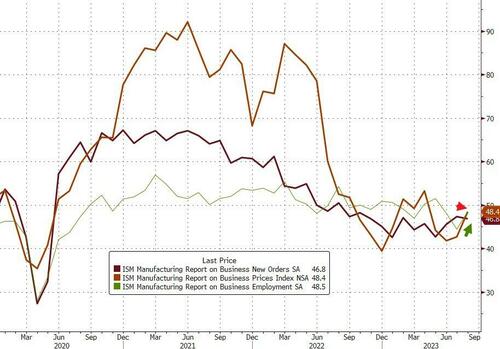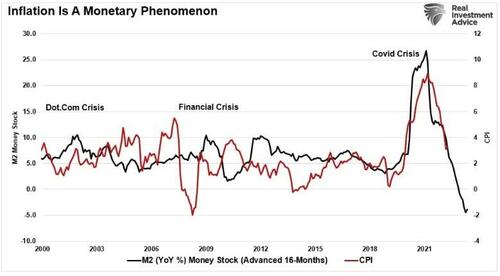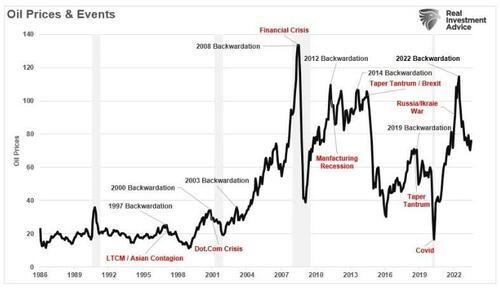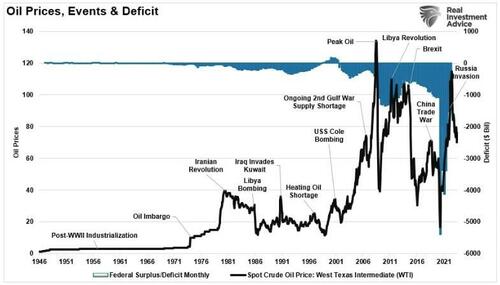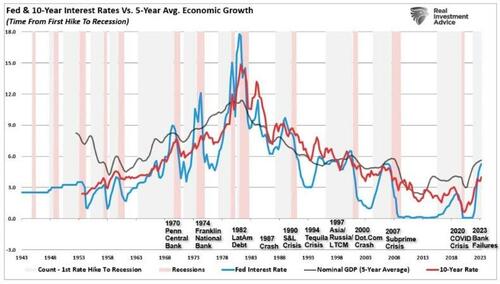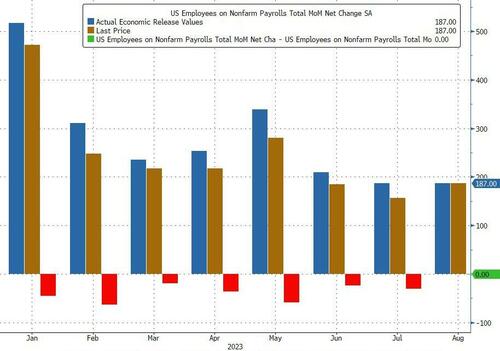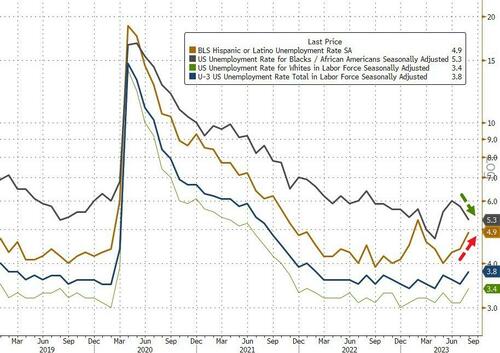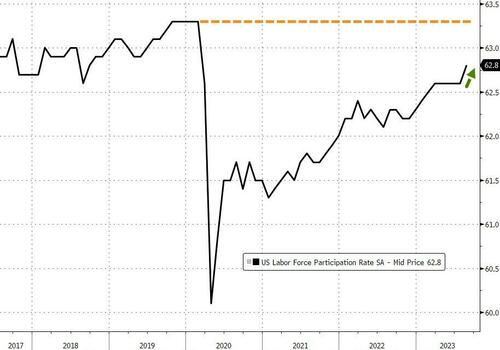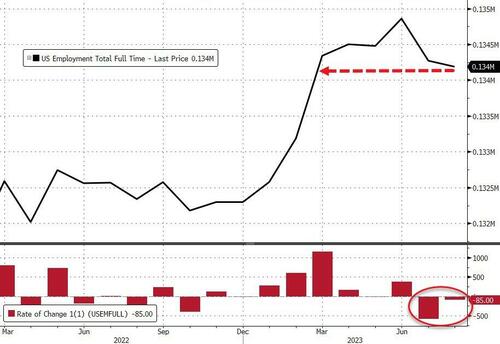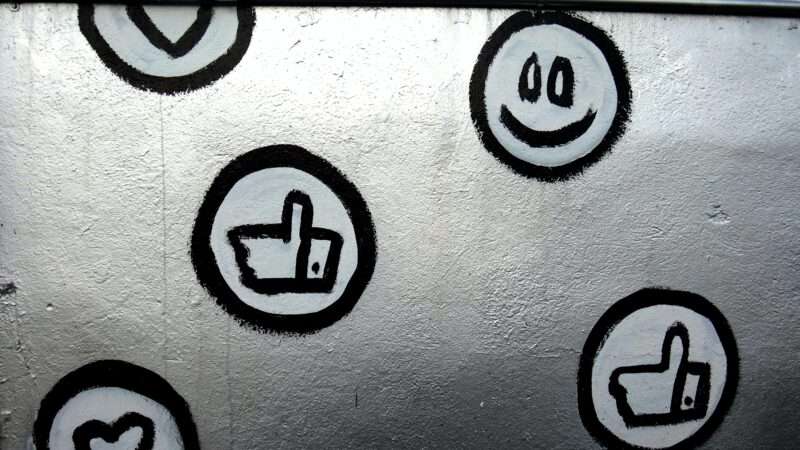This November, rock’s most successful and pugnacious communists will be inducted, six years after they became eligible, to the Rock & Roll Hall of Fame. Rage Against the Machine, a band that kicked the doors down on the 1990s with a then-novel mix of brutally heavy guitars and hip-hop vocals, also blended in unlikely tandem two other disparate traditions of American life.
The first, obviously, is rock music: the rhythmically buoyant and harmonically uncomplicated sound of post–World War II popular song that, however corny it might sound to 2023 ears, signaled an explosive liberation for succeeding generations of youth. This quintessentially American mongrel mashup of demotic musics, from country to rhythm ‘n’ blues to gospel, vibrated with a rebellious, life-affirming energy that helped make a variety of old restrictions—racial, sexual, behavioral—seem ridiculously out of touch.
The second tradition Rage Against the Machine both emanated from and actively promoted is violent revolutionary communism: the forcible equality of output and outcome at the expense of independent choice and action. Whole mosh pits’ worth of young men received their first real introduction to the Cuban revolutionary murderer Che Guevara and the Peruvian Maoist rebel army Shining Path through the advocacy of Rage singer Zach de la Rocha and guitarist Tom Morello.
Rock music in its many permutations since Chuck Berry has been wildly capacious in the ways it can feel and mean. This year’s other Hall of Fame inductees range from the bubbly soul singers the Spinners to the dreamy/arty British songstress Kate Bush to the country songbook lifer Willie Nelson. But killing people in the name of equality was a relatively new emphasis within the decidedly individualistic art form of rock.
Rage’s enthusiasm for bloody revolution was expressed mostly in their extra-musical statements and iconography. (An early band T-shirt included instructions for making a Molotov cocktail.) Asked by the Chicago Tribune in 2001 about the atrocities committed by their favorite Peruvian insurgents, Morello defended the Shining Path as people “standing up against the U.S. corporations dominating their economy and directing the vast resources of Peru not toward the Peruvian people but toward U.S. pocketbooks.” This “context,” he added, explained the media’s “demonization of the Shining Path.”
RATM’s actual lyrics tend more toward domestic denunciations—against racism, cops, public education, mass media, misogyny, American exceptionalism, and the oppression of non-elite classes. Most of all, the group proclaimed itself from the rooftops as being devoutly anti-capitalist.
But therein lies a paradox deeper than the familiar charges of hypocrisy that greet millionaire Marxists the world over. Immediately prior to their meteoric rise, and one decade before technology toppled the music industry decisively in the direction of the consuming proletariat, Rage Against the Machine signed a deal for the release and, most importantly, ownership of their music with one of the world’s largest corporate entertainment conglomerates, Sony, via their subsidiary label Epic.
When asked about the possible hypocrisy of their Epic deal—and boy, were they asked—Morello liked to insist that they squeezed concessions out of the big bad corporation that most baby bands never get, maintaining total artistic control over music and packaging and promotions, plus a guarantee that the label would release each record as promised or face stiff financial penalties. But otherwise by all accounts it had the same crummy aspects that nearly every major label deal has always had, at least at the start of a career: The label, while charging nearly all the expenses in making and marketing the record against the band’s royalties, took and kept actual legal ownership of the recordings themselves.
Rage signed over ownership of their music to Epic by choice because they saw no other way to achieve what they wanted to achieve: not just a chance to make a living touring the country in a van like such rugged punk forefathers as Black Flag, but a chance to have the financial and promotional juice to get to the top of the charts, and eventually into the Rock & Roll Hall of Fame itself, while serving as an unintended advertisement for the very economic system the band so loathed. Capitalism in the form of the huge agglomeration of financial power in Sony gave them something they wanted, and they had no compunctions—like most human beings, artists or not—about taking advantage of it when they thought it might benefit them.
Communists by Nature, Capitalists by Choice
Rage arose amid a grunge-era hard-rock youth movement that, whatever the lyrical politics, tended to glorify as a business ethic punk rock’s brand of small-bore DIY capitalism. (The band’s first performance, in 1991, was at L.A.’s legendary punk/indie rock dive Jabberjaw.) They sold more than 5,000 copies of a demo cassette that was illustrated by a cover photo of the stock market and affixed with a match, to inform the buyer of the band’s desire to burn the system down.
That system came knocking almost immediately, with major labels showing interest already after the band’s second gig. Less than a year into their existence, they hooked up with Epic, a division of the globe-straddling entertainment/electronics/engineering behemoth Sony.
This devil’s bargain with The Man became a source of incessant razzing, even as the band spun previously unfathomable success out of foul-mouthed rap-metal and strident leftist politics. Mike Muir of Suicidal Tendencies, a beloved Southern California hardcore band that once opened for Rage on tour, recorded a song with his side project Infectious Grooves in which he slammed an unnamed but easily recognizable band for “making your political statement/or are you trying to add to your financial statement?/And let’s not forget the evil corporations/Then why is SONY the sponsor of your presentation?/Bitch!”
The indie-punk tradition exemplified by Black Flag or Fugazi often involved putting out your own damned records (which those band, respectively, did through the SST label run by guitarist Greg Ginn and the Dischord label co-owned by singer-guitarist Ian Mackaye) and engaging in a constant hardworking grind. This attitude ran through many of the “get in the van!” road warriors of independent music from then to now. Rock music was not merely a realm of art and play—it was, in the noblest sense, a creation of hard work. It’s capitalism at its most basic, of the sort nearly any person honest with themselves, left or right, admits they want: the chance to use what is yours in free exchange with other people to get the things you need. But as Morello would admit, that Black Flag and Fugazi way of evading corporate capitalism was more work than Rage felt inclined to do.
Rage, while aware of the potential contradictions in an anti-capitalist partnering with a multinational conglomerate whose engineering and electronics innovations were used in U.S. munitions in Vietnam, never flinched from defending their choice as a capitalist means to socialist ends.
“Rage Against the Machine sold 14 million records of totally subversive revolutionary propaganda. The reason why is that the albums were released on Sony and got that sort of distribution,” Morello told The Progressive in 2004. “I admire bands like Fugazi that take the other route. They are completely self-contained and independent. But if you do that, then you have to be a businessman. Then I have to sit there and worry about the orders to Belgium and make sure they get there. That is not what I’m going to do.”
Such a division of labor allows for the artists to focus on what they do best and care about most. “We’ve had…complete artistic control, 100 percent over everything,” Morello continued. “Every second of every video, every second of every album, every bit of advertisement comes directly from us. I don’t even look at it as a tradeoff. You live in a friggin’ capitalist world. If you want to sell 45s out of the back of your microbus, God bless you. And maybe that works better, I don’t know. I’ll see you at the finish line.” Capitalism’s advantages for the band were so obvious that Morello doesn’t even recognize tradeoffs being involved. It was just good for Rage, full stop.
With the proceeds from that successful arrangement, the band could generate more resources to donate to food banks and assist the homeless and rail against sweatshops. Morello blamed “the historical circumstances in which we were born” for the fact that there was no “socialist record label that would distribute our propaganda to the four corners of the globe.”
The world we are born into often does present circumstances we must adjust to, even while we can agitate to change it. But engaging in capitalist behavior—behaving as if one owns one’s self, one’s labor, and one’s property and should be free to make choices about how to use, trade, or sell one’s possessions—is something even the most capitalist-hating progressive embraces in practice. Observing both their actions and words, what they object to is not the choice-making apparatus of capitalism per se but some results of that system in practice that seem unfair. And few industries historically seemed as unfair as the music industry.
In the time between RATM’s chart-topping run in the 1990s and today, the particular shape and outcomes of how most popular music is made and distributed have changed nearly beyond recognition. Those changes, reflecting capitalism’s signature delivery of both abundance for the masses and creatively destructive heartache for previously successful producers, highlight a confusion at the core of the band’s understanding of the system they sought to burn down.
Hating Capitalism, or Hating Specific Capitalists?
Morello and his band not only freely allied themselves with corporate capitalism by signing with Epic; they did so leaping eyes open into an industry that has forever been one of the more famously rapacious, dishonest, and unfair to the worker/artist.
Most record labels, throughout the industry’s permutations, have offered fame-hungry artists variations on the following bargain: We will give you entrée into the tantalizingly impassable worlds of distribution and promotional networks and relationships with radio and retail, plus some advance money to record from your own future royalty stream, and in return you will sign this take-it-or-leave-it deal and not fuss over repayment details that frequently shock the conscience. And we will retain ownership of the copyrights in your recordings long after we’ve made in some cases hundreds or thousands of times as much money as we ever spent on selling them, since nearly all such costs are taken out of the artist’s royalty rate of maybe 10–15 percent at the most on the album price.
Even after the flagrant exploitations of the 1950s and ’60s were well into the rearview mirror, record companies maintained a notorious track record for not living up to even their limited commitments to pay artists the pittances they promised. Music industry lawyer Don Engel once told Fredric Dannen, author of the 1990 music industry exposé Hit Men, that “there isn’t an honest royalty statement issued by any major recording company in the business today….[D]id you ever in your career see an audit where there wasn’t a shortfall to the performer?”
Read virtually any detailed memoir of rock history, from Chuck Berry or Prince or even Taylor Swift, or go back even further to pre-rock songwriters such as Stephen Foster, and you’ll find tales of underpayment and outright theft of monies legally owed to artists. Label heads would arbitrarily assign themselves or associates unearned songwriting credits. They’d pay poor artists the occasional gift of a Cadillac (sometimes a rented one!) or a random pile of cash rather than fair accountings of money due. They invented arbitrary adjustments to make sure they didn’t even pay the royalty rate on at least 15 percent of sales; they deducted for “packaging” on digital sales that have no packaging; they paid songwriter royalties (distinct from royalties due for the albums or singles themselves) on only a preset number of songs per CD and at a rate only three-quarters of what any other user must pay. They’d decide you got only half your royalties on sales that occurred during times they were paying (with your money) for TV ads. Oh, and your lawyer also often represented the label.
The legendary Atlantic Records founder Ahmet Ertegun told the authors of the 1977 book Rock ‘n’ Roll is Here to Pay that he once rejected an offer from Columbia (the label which eventually became Sony, owner of Rage’s label Epic) to distribute Atlantic’s albums and pay Ertegun’s label a 3 percent royalty. Ertegun informed the Columbia representative that “We’re paying our artists more than that!” The Columbia man, per Ertegun, responded with “‘You’re paying those people royalties? You must be out of your mind.’ Of course he didn’t call them ‘people.’ He called them something else.”
All of the advance money a band gets on signing a standard label deal is just that—an advance against those royalties, not a genuine payment from the label’s own resources. Regardless, though they have essentially no actual skin in the game of their own money, to this day on Spotify you will see in the fine print that the copyright on Rage’s music still belongs to Sony. And while it’s true that labels often have to eat the costs of records that don’t sell, they can defray those losses through ever-creative accounting of the hits.
Hole singer-songwriter Courtney Love once calculated that a four-member band that received a $1 million advance, and then sold 1 million records, would end up with each member getting about $45,000, while the label pocketed $4.4 million. This may seem unfair, but bands make these deals not because it’s the only way in the world to sell recordings, but because they are gambling that the major label’s resources might push them to Rage level cultural heft and wealth.
Music for the Masses
Classical Marxism saw the core conflict in the industrialized world as a struggle between bosses and workers, eliding The People in their largest mass: as consumers. But modern progressives in the West should give more consideration to what consumers (that is, The People in their vastest sense) get in quasi-capitalist modernity. How the music industry in the 21st century has evolved to deliver cheap-bordering-on-free abundance to the listening masses is a wonderful object lesson in how capitalism can run roughshod over old Marxist categories focused only on bosses (labels) and workers (musicians).
The industry that Rage chose willingly to partner with has changed almost beyond recognition in the three decades since the band hitched its wagon to Sony. While pollyannas will stress that 2022 saw the recorded music industry’s highest revenue ever, that’s only in nominal terms; the inflation-adjusted 2022 haul of $15.9 billion was still lower than every year from 1990 to 2006, even if revenue growth is indeed on the upswing again over the 2010s.
Here the individual vs. collective divide that Rage’s brand of communism wants to forcefully settle for the collective gets complicated. Because while the entire world of music as paid for is stumbling upward again, companies and artists within it complain constantly about the pathetically low payments they receive from the primary means of listening to and paying for music these days: streaming. Consuming music through services such as Spotify or Amazon or Apple Music or YouTube now constitutes a startling 84 percent of total industry revenue. “The number of paid subscriptions to on-demand music services continued to grow at double digit rates and reach new highs in 2022,” the Recording Industry Association of America reports. “The average number of subscriptions for the year grew 10% to 92.0 million, compared with an average of 84.0 million for 2021.”
Purchased music, whether physical or digital, now accounts for less than 14 percent of total industry revenue. Things have changed fast: Downloaded purchases were 43 percent of industry revenue just a decade earlier. How money flows into the pockets of writers and performers and producers and distributors is always shifting—sheet music and even ringtones (remember?) were once substantial and even dominant moneymakers, and now they’re nearly meaningless. But a pattern of wider, cheaper access for listeners to recorded music continues apace this century, even if artists and labels feel squeezed. Rolling Stone recently reported that only 0.11 percent of artists on Spotify got more than $100,000 in 2022 from the service’s payments. Still, $1.8 billion of royalties in the current system that same year went to artists with no label affiliation. And listeners get to choose from around 40 million new music files uploaded for their pleasure to streaming services a year.
The audience for music—the masses—have access, for prices as low as $10 a month or even free with advertising, to a near-mystic percentage of the history of recorded music, on demand and easily searchable.
While nearly all professional musicians consider the likes of Spotify near criminal in their payment rates (such that it can take more than 300 streams for a recording artist to make a buck), a music listener would have to have an artists’-rights soul stronger than steel to deny the shocking increase in quality of life that the world of streaming has bestowed. That artists feel like they have to accept the deals that Spotify made with the labels over payments is rooted in the same original sin that Rage and nearly every other band in the past century committed of granting ownership of their music to a record label essentially just for an interest-free loan of their own income. (Taylor Swift’s recent move of re-recording her older albums whose ownership remains with her original label in new versions she now owns is her attempt to give fans a chance to redeem her own original, in retrospect, bad deal.) Rage and all the musicians complaining about how much Spotify chooses to kick back to their labels willingly made that deal in hopes of finding megasuccess by taking advantage of the accumulation of capital and marketing and sales savvy that in the old days only a major label could provide.
Markets: Realms of Coercion or Choice?
Buck AE Down is an L.A.-based musician of “card-carrying Marxist” inclinations. I met him through the worlds surrounding the Burning Man festival. Sympathetic as he is to Rage’s stated mistrust of corporate capitalism, the shape of Down’s career demonstrates that the simple binary choice Rage saw in 1992 has in the 21st century branched out.
In the 1990s, Down was in a band called Combine, signed to Caroline Records, a small indie-coded label owned by the bigger record corporation Virgin. He is very familiar with the temptations that young bands face to make decisions they might live to regret. There are advance amounts that sound upfront like glory to people who had been delivering pizzas 40 hours a week around their 40 hours a week of rehearsing. And music publishing companies offer similarly extravagant-sounding checks to induce young bands to hand over the rights to their compositions, and those lose control of the various complicated fees that legally accrue to that ownership when entities from restaurants to live bands to labels to radio to streaming sites use the songs.
But that asset could eventually be the most valuable thing the musicians own. And no matter how much money a label spends upfront for a recording, “at no point will any band have any say” in how that money is spent, Down says. The label generally dictates who gets hired and paid to work on a recording project and for how much, with “the band practically irrelevant to any of the fiduciary decision making being made.”
Down issues his own records now, as digital tracks and vinyl LPs, and he does pretty much everything involved from performance to production by himself, using the popular site Bandcamp as a sort of label substitute to find audiences and to showcase and sell his music. The records are not his prime source of income, but he has learned that “if the artist just does everything yourself” and cultivates direct relationships with fans, “you don’t need tens or hundreds of thousands of buyers.” A fan base as small as a couple thousand could in theory “keep a musician out of a day job.”
Down still has some nostalgic regard for aspects of the old major-label model that Rage bought into. Sometimes to make a truly excellent and rich-sounding recording in the classic rock style, the capital resources of a major label are necessary; no Bandcamp recordings are apt to have the quality of equipment, professionals, or time or years of artist development that lie behind most famous classic rock LP of the 1970s through the 1990s.
Still, Down has no doubt that Bandcamp is “the single greatest thing to happen to indie recording artists.” He sees it as a digital amalgam of the little cottage industries that arose in the old days of indie music scenes: the xeroxed zine gal, the guy who owned the four-track, the small venue that gave them a chance to expose their music to potential fans.
In giving artists and fans a one-stop shop to find hundreds of thousands of indie artists self-releasing music, and the chance to buy digital tracks or physical media or other merch directly—taking only 15 percent for itself (and on certain Fridays, zero)—Bandcamp is a low-cost replacement for a record label in nearly all its functions for artists with small but passionate fan bases. The site has funneled over half a billion dollars to musicians so far, with physical items amounting to about half its sales these days.
“Never in the history of recorded music has there been a deal that good” for artists, Down says. (Recall that Bandcamp’s 15 percent is about the most any band could expect from selling its recordings in the old label system.) And you can choose your own prices and have your money in your hands within a day rather than waiting for six months after the end of some company’s accounting period (or never getting your due at all, a common fate for major-label artists). “After five years [using Bandcamp], I have yet to have anything but a positive experience,” says Down. “I’ve never heard of a bad experience.”
Bandcamp’s ability to exist and thrive is an artifact of the same digital revolution that tore down the music industry from its turn-of-the-millenium heights of earning $25.6 billion in 1999. Its existence makes the decision that Rage felt obligated to make seem outmoded, while at the same time making things staggeringly great for the listener.
But whether or not a band can accept what is likely to come to them in this new listener-centric digital music business depends on its goals. If one’s aim is not just to be a musician, much less a living-wage working musician, but to be the kind of ideological champion that Rage imagined themselves as, then one craves more than Bandcamp’s chance to find a natural audience and allow them to patronize you directly. If you want to turn the world on to revolutionary communism, you need the power that only corporate concentrations of capital can give: the media and cultural push to make you the sort of superstar that will sell tens of millions of records and end up in the Rock & Roll Hall of Fame.
But in that case you had better be, like Rage was, both talented and lucky. Would-be revolutionaries linking their fate to a corporate label should remember that then, and even more so now, that alliance gives you at best a one in a thousand chance to achieve RATM’s level of prominence and wealth. The customer—The People, united!—is the ultimate driving force in capitalism. Fortunately, most musicians don’t, and needn’t, have that sense of global mission (in Rage’s case, alas, for a sinister cause).
For musicians who understand that the true driver of any success they can earn is not a major corporate label but a willing paying customer, the current state of the music business is nearly heavenly, even if that paying customer is nearly always just paying for the right to listen at will and not to buy outright. A revolution has upended the power structure of the music industry, creating a more level playing field for artists and a shocking abundance for the masses. And it had nothing to do with Rage Against the Machine’s cherished communism.
The post How Rage Against the Machine Used Capitalism To Sell Communism appeared first on Reason.com.
from Latest https://ift.tt/uOXUv3L
via IFTTT




